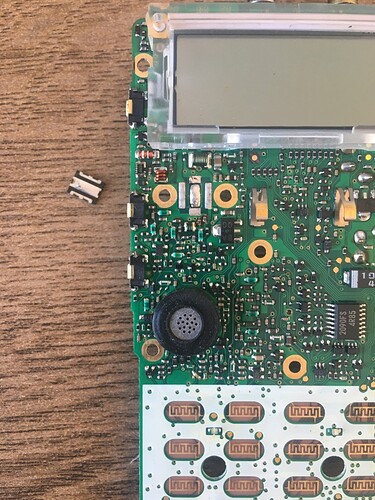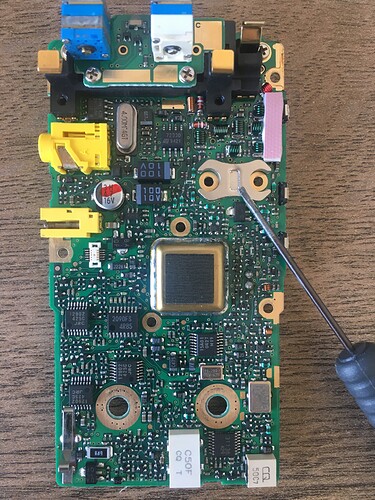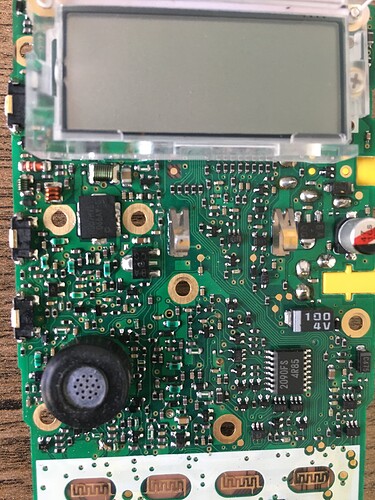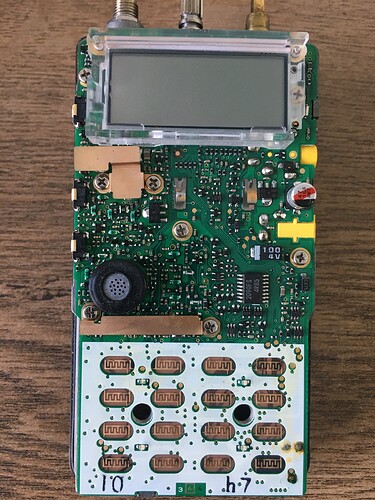I never thought about that as an issue, I’ve been quite lucky not to blow any finals in my ham career and finally it happened 
I am doing quite a lot of VHF only activations and so far my main rig was Yaesu FT-60, I’ve used it with a rubber duck, 1/4 and 5/8 Diamond telescopics, 3 el Yagi for the past year and it has never developed any issues, so I take it as a very reliable HT and only recently I’ve decided to shift towards my TM-V71 mobile rig as a main radio … So, my little FT-60 served as a backup only radio, sitting in a backpack for the past month.
Up until my latest activation on Djouce EI/IE-007.
The weather was unsettled, forecast has predicted some rain, but it was okay for a while so I’ve decided to hike up on to my local summit for a winter bonus  Taking into account the forecast, I’ve decided to go lightweight, having my FT-60 only and hoping for a quick activation.
Taking into account the forecast, I’ve decided to go lightweight, having my FT-60 only and hoping for a quick activation.
Although the plan has worked really well (I’ve activated the summit in seven minutes) I’ve managed to get in to a middle of a snow cloud and all my QSOs were under quite strong dry snow, even visibly hitting a 5/8 telescopic whip I was using.
On receive it was heard as heavy static noise on all, even S9 signals, making weaker signals difficult to copy.
Still happy with successfull activation I’ve returned home and it was only couple of days ago, after doing a routine RF power checks I’ve dicovered my FT-60 has no more output power!
After initial investigation it appeared that its final FET RD07MVS1 is gone having a short between Gate and Source. A driver has survived, as well as an RX path. Suprisingly, FT-60 has couple of ESD supressors on board, but that only partially helped apparently.
Another problem is, RD07 FETs are available only from China or US so it is a long wait time until I get it fixed.
I guess most of activators are well aware of issues static can bring, so this post is just as a humble reminder 
73 de EI4JY
That’s a bummer Alex. FT60s are fine radios normally.
In stock here and I have generally found them reliable: RD07MVS1-101 MITSUBISHI TRANS 175MHZ 7W 7.2V
I think enigma-shop.com stock a different package format though might be worth a try. Again a reliable supplier
Thanks Barry, I try to go with the first option! Got the radio taken apart already and old FET removed 
Double-check the connection from the board to the antenna jack. I lost an HT because of that. I believe it broke from the strain I put on it from coax and large antennas. I didn’t have the eyesight, tools or knowledge repair it!
Good point Rick actually! An antenna jack is not hardwired in the HT. There is a tension bar from the board to an antenna jack central pin. So far that connection looks okay in my case.
Doesn’t look to be much solder on the ground tab - did the heatsinking fail?
That is the result of my de-solder Barry. But the way the FET was mounted does need to pay attention to that indeed.
So I am as happy as I could be now! I’ve got the MOSFET delivered just on time and even before Christmas! Thanks Barry for the link!
It took few nervous minutes to solder it in and my FT-60 is back in action sporting the same power as before the failure  The main catch with the replacement was the FET is soldered not just to the PCB top but also its source is soldered to the heatsink’s pin, underneat the PCB. The heatsink is in turn soldered to the bottom of the PCB
The main catch with the replacement was the FET is soldered not just to the PCB top but also its source is soldered to the heatsink’s pin, underneat the PCB. The heatsink is in turn soldered to the bottom of the PCB  So the challenge was to carefully solder the FET to the PCB top, plus the heatsink at a same time
So the challenge was to carefully solder the FET to the PCB top, plus the heatsink at a same time 
There is a video on Youtube by RV4HV (now R4IN) of the actual, quite straight forward DIY process in case anyone faces similar issue.
What’s the preferred way for a SOTA op to minimize static risk on an activation like this?
73,
Tom, N2YTF
Have a static bleed resistor where possible and to disconnect the antenna and shutdown when there is severe local noise coincident with snow/rain etc.
I guess, the best would be not to operate at all 
I’ve also read about people putting a couple of hundred kilo ohm resistor between a central antenna pin and ground.




